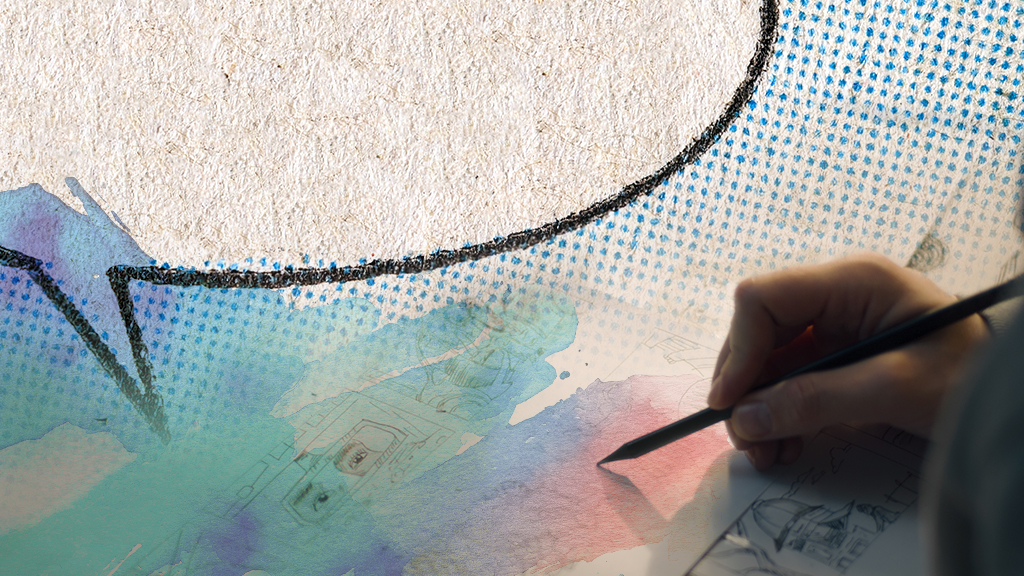
Since 1992, Americans have commemorated May as Asian American and Pacific Islander (AAPI) Heritage Month. This month, we explore the creativity and innovation of Asian Americans and Pacific Islander graphic novelists. Through illustrations and written expression, graphic novels discuss difficult topics and share deep insights on cultural identity in a compelling and approachable way to audiences of all ages.
Featured Creators
Our featured creators, Gene Luen Yang, Robin Ha, and Thien Pham, share relatable stories about growing up. They delve into their own distinctive experiences, such as facing racism and bullying within their environment and embracing how the support of friends and family creates a much-needed sense of belonging within their new setting.

Gene Luen Yang
Gene Luen Yang is a Chinese American cartoonist, born and raised in California to Chinese immigrants, and is a prevalent author of graphic novels. In 2016 and 2017, he served as the National Ambassador for Young People’s Literature. His book American Born Chinese was published in 2006 and won the American Library Association’s Printz Award and the Eisner Award for Best Graphic Album. It was also nominated for a National Book Award.
American Born Chinese is still a popular and highly regarded graphic novel. Yang weaves together three storylines: a Chinese fable of the Monkey King, a coming-of-age story about Chinese American Jin Wang, who is bullied at his new school, and the tale of Chin-Kee, the utmost negative Chinese stereotype who embarrasses his cousin Danny when he visits. The colorful graphics, use of humor, and serious introspection all lead to the importance of finding your true identity—a relatable and important topic for any young person.
Thien Pham
Thien Pham was born in Vietnam, moving to the United States with his family as a boy. He is a graphic novelist, comic artist, and educator. He wrote and illustrated his recent book Family Style: Memories of an American from Vietnam. Since its publication in 2023, the book has won a YALSA Award for Excellence in Nonfiction Finalist, School Library Journal Best Book of the Year, and Barnes and Noble Best New Book of the Year.
Family Style: Memories of an American from Vietnam tells a personal story of Pham’s immigration to the United States, from childhood to obtaining his citizenship as an adult. Pham features specific foods throughout the book—each dish intertwined with memories of survival, stress and instability, camaraderie, and community. By highlighting these dishes, Pham ties in a cultural identity and sets up an identifiable framework for those reading his story, no matter their background.
Robin Ha
Born in Seoul, South Korea, Robin Ha moved to the United States at fourteen. She grew up reading comic books and started to draw comics at an early age. Ha wrote and illustrated her book Almost American Girl, which was published in 2020. This memoir is a Harvey Award Nominee for Best Children’s or Young Adult Book.
Almost American Girl shares Ha’s journey from South Korea to the United States as a young girl. She describes her experience of navigating a new school without understanding English, the feeling of isolation generated by culture shock, and the cruelty of being bullied as an outsider. Slowly, she builds genuine friendships, and finds connections and community through her love of comics. This work, along with the other works featured in this blog, communicates emotion in a way that allows for a closer and more profound look inside the AAPI experience.
Graphic Novels and Copyright
Graphic novels are stand-alone stories of sequential illustrations. This visual storytelling may also be accompanied by substantial text, such as dialogue and narration. Graphic novels may be created by one individual, creating both the illustrations and the text, or may be a joint work. A joint work is a work created by two or more people, with the intention to merge their contributions into inseparable or interdependent parts of a work. The Copyright Office offers resources on registering illustrations and written expression and provides further guidance on how to determine what is and what is not a joint work.

Copyright for All
Graphic novels use a blend of illustrations and written expression to communicate to an audience in a dynamic and compelling way and provide an immersive space for understanding. The AAPI community contributions within the realm of graphic novels are numerous and continue to grow. As new graphic novels emerge, the copyright system will continue to be accessible to all, welcoming diversity, and enriching the cultural landscape.
One of the Office’s strategic pillars, Copyright for All, addresses the need to make the copyright system as understandable, accessible and inclusive, reaching as many members of the public as possible. The Office works to enrich the nation’s culture by empowering and connecting global copyright communities. As new innovative works are created, the Office will find ways to support those who want to share their stories with the world, building community and expanding awareness.
